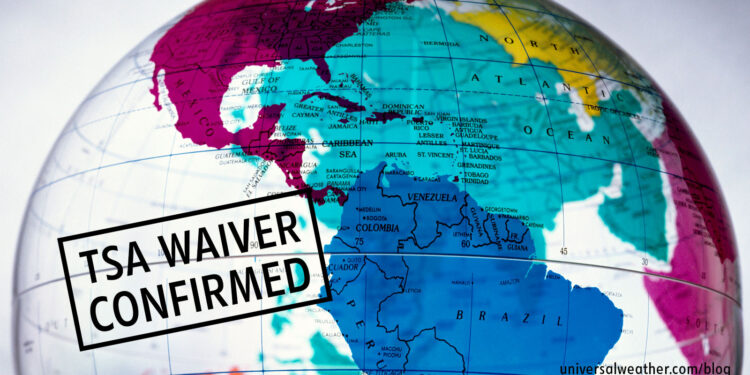Business Aviation Trip Planning Tips: TSA Waivers – Part 1: Knowing When to Apply for One

This business aviation blog post is part of a series on information pertaining to Transportation Security Administration (TSA) waivers.
While there are a variety of TSA waiver types available, the most commonly requested waivers are for international movements – both overflight of the U.S. and landing within the U.S. It’s important to be aware of TSA waiver criteria, as well as the various scenarios under which TSA waivers are required.
The following is an overview of what you need to know:
1. Know the different types of TSA waivers
There are six basic types of TSA waivers:
a. An international waiver for private non-revenue and charter (non-scheduled commercial) aircraft that covers operating to, from, and within the U.S.
b. A domestic waiver for Washington (KDCA) airport area which encompasses a 39-nautical mile area around KDCA.
c. DCA Access Standard Security Program waivers that are necessary when operating into/out of KDCA for operators who meet TSA security program requirements.
d. Sporting event waivers that are required during large events such as Super Bowl.
e. Special event waivers which are needed for certain convention locations.
f. Disney waiver requirement when traveling within airspace around Disneyland California and Disneyworld Florida.
2. Most requested TSA waiver is the “international waiver”
From all the different waivers available, the TSA international waiver is the most requested, as it’s most applicable to many operators, both non-U.S. and U.S. The international waiver is comprised of four separate subtypes as well as four flight types:
- Subtypes include fleet (two or more aircraft), single (one aircraft or a single operation), overflight (for overflying the country), and no transponder (for aircraft without transponders).
- The various “flight types” include passenger, crew only, cargo, and cargo with passengers. After selecting the international waiver from TSA website, you’ll then select your subtype and flight type.
3. International waivers are applicable to many non-U.S.-registered operations
Aircraft registered in Bahamas, Bermuda, Canada, Cayman Islands, Mexico, and the Virgin Islands only require TSA international waivers for overflight of U.S. if point of origin and destination are not one of those six countries/regions mentioned above. A Canada-registered aircraft, for example, may operate from Toluca (MMTO) to Vancouver (CYVR) without a waiver, but would require a waiver for Barbados (TBPB) to CYVR. TSA waivers are usually required for aircraft overflying the U.S. with a Maximum Takeoff Weight (MTOW) greater than 100,309 lbs. Non-U.S. aircraft, not registered in one of the above six countries/regions, always require TSA waivers to overfly the U.S. and to operate within the U.S. The exception is if you‘re operating from a non-U.S. location – making one stop in the U.S. and departing the country – you would not require a waiver as your flight is covered/controlled by Advanced Passenger Information System (APIS). For example, Aa flight from Luton (EGGW) to White Plains (KHPN) to Le Bourget (LFPB), for example, would not need a TSA waiver, regardless of MTOW or where aircraft is registered.
4. TSA waivers are necessary for some U.S.-registered aircraft operations
U.S.-registered aircraft only require TSA waivers when overflying the U.S. with aircraft over 100,309 lbs. MTOW. Waivers are not required for U.S.-registered aircraft, regardless of MTOW, when operating within the U.S.
5. TSA waiver information is available via NOTAM
Notice to Airmen (NOTAM) 6432 pertains to all aircraft under MTOW of 100,309 lbs. NOTAM 6433 covers aircraft above MTOW of 100,309 lbs., while 6499 outlines definitions for 6432 and 6433. These NOTAMs are found on the Federal Aviation Administration website under the temporary flight restriction section and reflect most recent TSA waiver changes implemented in 2010.
6. Know validity of TSA international waivers
A TSA waiver for a single aircraft is valid for up to 89 days, while a fleet waiver is valid up to 90 days.
Conclusion
Work with your 3rd-party provider and confirm TSA waiver requirements via NOTAM during initial planning phase of an international trip.
Questions?
If you have any questions about this blog article or need assistance coordinating your TSA waiver, contact me at juanmuniz@univ-wea.com.
Stay tuned for Part 2, which covers more information pertaining to TSA waivers.




